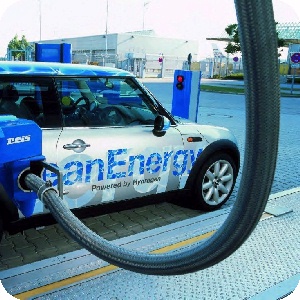Searching for Scientific Utopia:
The Future of Scientific Advances, Biology, Chemistry, Physics & Inventions.
By Mian Shaan Ali Choudhry (Principal of Shaan Science Academy) - August 2009.
Think of all the scientific advances that are just out of reach. Or better yet, think of all the technology we already have, but we have yet to make it affordable.
Take cellphones for example. We've had the technology to make them since the 1960s, but they weren't really affordable or mass produced until the late 1990s. Now our cellphones come with a host of extra gadgets like a video camera, games, GPS, texting, internet access, music, radio and more.
But we have yet to invent a more powerful / longer lasting battery. Or maybe an alternative way to recharge the battery. Quite a few companies have come out with solar adapters for cell phones which people can either carry with them or leave in their car. Or better yet, a cell phone with its own solar cells.
Next lets discuss housing. We are still using the same building technology we've been using for hundreds of years. Wood, brick, mortar and cement. Depending on the building we also use steel and glass... and glass is a very good insulator. When it comes to housing it is all about insulation.
So what we need is a new kind of insulation, or we need to think backwards and build using more stone (which is a great insulator).
Food wise we now have genetically modified foods, although the growing trend is towards natural organic foods (without pesticides) that are grown in greenhouses and controlled environments. Which brings us back to building technology again. We need to be mass producing more greenhouses, especially in regions which have a shortage of locally grown food.
The world also has a growing shortage of fresh / clean water. So what we need is a way to cheaply distill / filter salt water and make water that is safe to drink. This technology could also be used to recycle water. After that its just a matter of transporting water to locations that need it.
 On top of this it would be nice to have more technology to conserve water. How about really tiny dishwashers? I think there is a market for a dishwasher about the size of a microwave, one that fits easily on the kitchen counter.
On top of this it would be nice to have more technology to conserve water. How about really tiny dishwashers? I think there is a market for a dishwasher about the size of a microwave, one that fits easily on the kitchen counter.That covers food and water, but what about health care? Think of all the advances we've had in the last hundred years of medicine. Its safe to assume we will make a good portion more advances in the next 20 years.
Lets take AIDS medicine for example. Anti-retrovial medicine has reached a point where AIDS/HIV is basically cured, but the medicine is quite expensive. Over time however the price of those medicines should come down. Part of the problem is not scientific, but just plain greed. The American pharmaceutical industry is more worried about their stock value and trillion dollar profits than actually treating people.
Outside of medicine new techniques and procedures for curing ailments, surgeries and such are continuing to make improvements. The sad fact however is that many Americans lean towards the quick fix, when in reality what they really need is more exercise and proper diet. Not much can be done to prevent health problems if people don't take care of themselves in the first place.
Extending life span is also within our reach as tests on a variety of hormones like HGH (Human Growth Hormone) show promising signs of maintaining a person's youthful appearance and increases our recuperative abilities. We may soon find a combination of hormones or a drug which allows humans to live significantly longer.
Failing that we now have robotic hearts, robotic limbs and robotic technology is quickly becoming a global industry. Leading the way is Japan where they are already experimenting with robotic soldiers (Mechs), robotic massage parlours and robots for essentially every menial task. Imagine 20 years from now walking into a McDonalds that is 100% automated, voice activated and serves up the food faster than a human could ever do. (Which leaves us humans doing all the jobs which require creative, managerial or maintenance skills.)
One of the biggest changes we will likely see will be in the automotive industry. Hydrogen cars are coming and within 10-15 years gasoline and diesel cars will be obsolete.
Along with that we can expect cars to get more complicated as GPS, computers, auto-pilot technology and other fancy bits become more common.
60 years ago the fastest road-legal car in the world was the Jaguar XK120. The 120 in the name was for its top speed of 120 mph (193 km/h). In 2009 the fastest road-legal car is the Gumpert Apollo Sport... The Ascari A10, Koenigsegg CCX TGW, Pagani Zonda F Roadster, Caterham Seven R500 and the Bugatti Veyron are arguably just as fast around a race track and collectively have top speeds of approx. 400 km/h (250 mph). What this tells us is that the top speed of road-legal cars has more than doubled in the last 60 years. So in the next 20 years we might expect a road-legal car to have a top speed of 677 km/h (421 mph).

A Russian company is currently working on a plane that is expected to replace the ol' British Concorde planes (only 20 were ever built, cruising speed of Mach 2.02 and they were retired from service in 2003). The TU-244 being built by Russian company Tupolev has a set goal of Mach 3 and will be set for launch in 2015.
For aerospace there is also the matter of the NASA space shuttle which will be retired in 2010, after 31 years of ferrying astronauts back and forth from Earth's orbit. To replace the space shuttle NASA (and international partners from 15 other nations) are planning to a Crew Exploration Vehicle (CEV) capable of performing the same tasks the space shuttle did, but also of landing on the moon and traveling to Mars as part of Project Constellation.
As of August 2009 we have two functioning robots on Mars: the Spirit rover and the Opportunity rover. By 2012 there will be 4 more missions by the United States, Canada, Russia and China to collect soil samples and send back info to earth. Because Mars' and Earth's orbits are different the optimal launch windows to Mars are every 780 days. NASA has plans to begin terraforming Mars by 2030 and manned colony missions by 2040. Russia and China have made similar claims, but all three are subject to budgetary restraints rather than technology.
In recent years there has also been a significant rise in space tourism and many independent companies building their own smaller space shuttles with plans to ferry people into orbit, give them a tour of a couple hours, and then return back to earth. The technology is there and its certainly profitable, but it doesn't really serve a logical purpose beyond helping to expand scientific research in the field of aerospace.
Conclusions? We are so close to having all the food, water, shelter, medicine, transportation, robots and clean energy we could ever want. With some time and investment we could be living in a technological utopia.
If you like This post Please Click on LIKE to appreciated us
ê.











